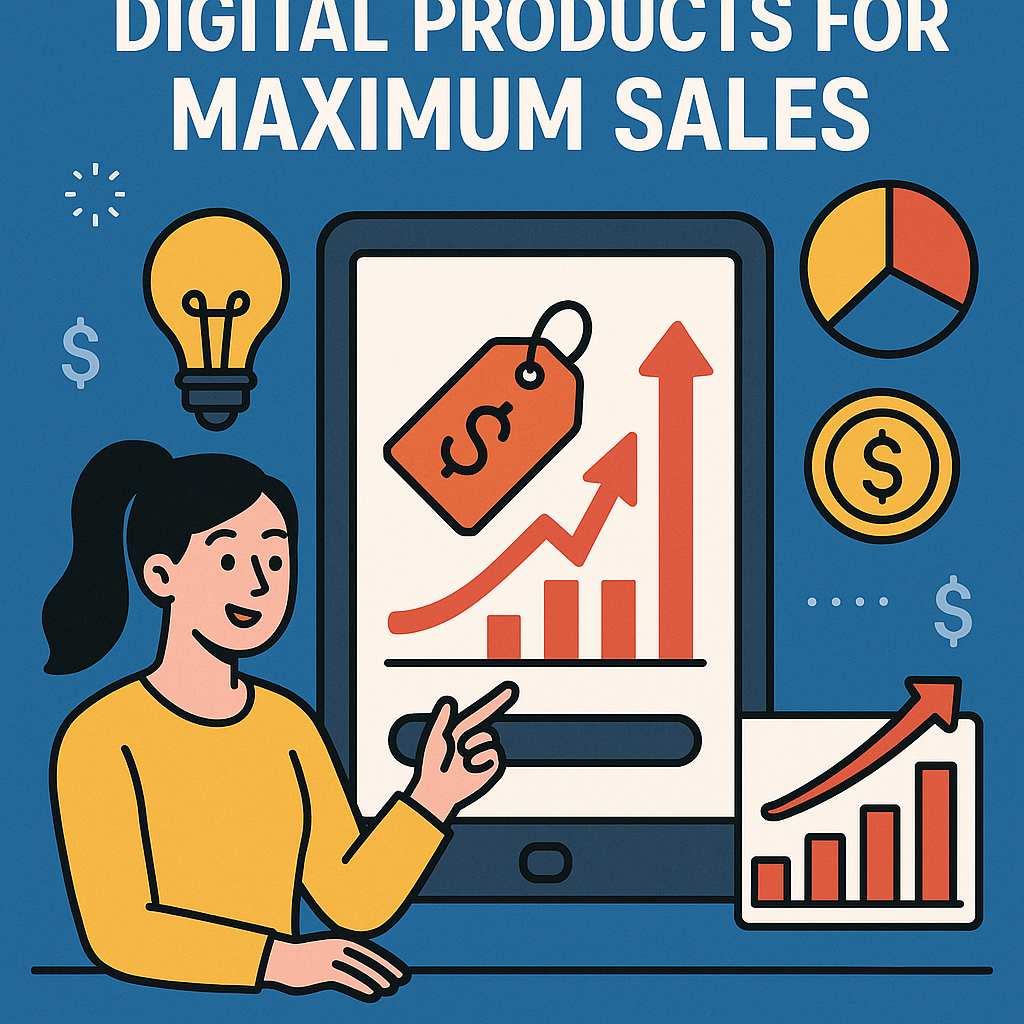You’ve created an amazing digital product—whether it’s an eBook, online course, template bundle, or software tool. But here comes the big question that makes or breaks your success:
How much should I charge?
Price too high? You scare off customers.
Price too low? You undervalue your expertise—and hurt your profit margins.
The truth is, pricing isn’t just about numbers. It’s about perception, psychology, and strategy. Let’s explore how to price your digital products to maximize sales and profits—without compromising your value.
1. Know Your Audience—and Their Willingness to Pay
Pricing begins with one word: understanding.
Who is your target audience?
Are they students, professionals, entrepreneurs, or hobbyists?
Are they looking for a premium, done-for-you solution or a DIY option?
Example:
If you’re selling Canva templates to small business owners, they may be more price-sensitive than a B2B SaaS company looking for automation scripts.
✅ Tip: Use surveys, niche communities, and competitor research to gauge what your audience expects to pay—and what they’ve paid before.
2. Use Psychological Pricing Tricks
Humans are emotional buyers. Smart pricing taps into that.
Charm Pricing: $49 sounds more appealing than $50.
Anchor Pricing: Show a higher price first (e.g., "Was $97, now $47") to increase perceived value.
Tiered Options: Offer 3 pricing plans—Basic, Pro, Premium. People often pick the middle.
⚖️ Studies show that anchoring and price contrast can boost conversions by over 30%.
3. Bundle Strategically
Bundling adds perceived value and raises your average order value.
Instead of selling a digital planner for $15, sell:
The planner
A video walkthrough
Bonus templates
Total? $49
Your costs don’t increase, but the value perception does.
✅ Tip: Always state the “separate value” vs. “bundle price” to highlight the deal.
4. Value-Based vs. Cost-Based Pricing
Digital products have no inventory costs, so cost-based pricing isn’t very helpful.
Instead, focus on value-based pricing:
How much time or money will your product save the buyer?
What transformation will they achieve?
How urgently do they need this solution?
If your course helps freelancers land $1,000 clients, pricing it at $29 doesn’t reflect the value—and people may assume it’s low quality.
5. Test and Iterate
Your first price is not your final price. Use A/B testing to find your sweet spot.
Try:
Different price points ($29 vs. $47 vs. $67)
Payment options (one-time vs. split payments)
Scarcity campaigns (“Price goes up in 3 days!”)
Track conversion rates, refunds, and customer feedback.
???? The best price is the one that balances conversion rate + customer value.
6. Create Urgency and Scarcity (But Ethically)
Use time-sensitive offers to drive action.
“Launch price ends soon”
“Limited bonus for first 100 buyers”
“Next cohort opens in 30 days”
Avoid fake urgency. Customers can smell it.
7. Offer Upsells and Cross-Sells
Your pricing strategy doesn’t end at checkout. Use:
Upsells: Add a workbook, coaching session, or bonus module after purchase.
Cross-sells: Recommend related products in follow-up emails.
These small additions can double your revenue without doubling your traffic.
Final Thought: Price Is Part of the Brand
Don’t just ask, “What will people pay?”
Ask, “What does this price say about my product?”
Your price signals quality, confidence, and positioning.
So own it. Test it. And optimize it.
Whether you charge $10 or $1,000, make sure it matches your value promise and your audience's expectations.

